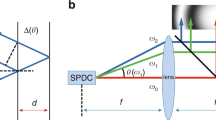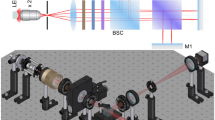Abstract
IN the Soviet Union at the present time, a novel system of telescope construction is engaging the interest of astronomers and those concerned with the erection of telescopes, whether for research observatories or for instructional purposes in schools. The system, called the meniscus catadioptric system, was worked out in 1941 by Dr. D. D. Maksutov, of the State Optical Institute. The principles involved and the advantages to be derived therefrom have been described by Dr. Maksutov in an article1 which appeared recently in the journal Nauka i Zhizn, published by the Academy of Sciences of the U.S.S.R.
This is a preview of subscription content, access via your institution
Access options
Subscribe to this journal
Receive 51 print issues and online access
$199.00 per year
only $3.90 per issue
Buy this article
- Purchase on Springer Link
- Instant access to full article PDF
Prices may be subject to local taxes which are calculated during checkout
Similar content being viewed by others
References
Maksutov, D. D., Nauka i Zhizn (Science and Life), No. 9, p. 1 (1944). The theory is described in detail and dimensional particulars are given under the reference: Maksutov, D. D., J. Opt. Soc. Amer., 34, 270 (1944).
Rights and permissions
About this article
Cite this article
SMITH, G. The Meniscus Telescope. Nature 155, 798–799 (1945). https://doi.org/10.1038/155798b0
Issue Date:
DOI: https://doi.org/10.1038/155798b0
Comments
By submitting a comment you agree to abide by our Terms and Community Guidelines. If you find something abusive or that does not comply with our terms or guidelines please flag it as inappropriate.



